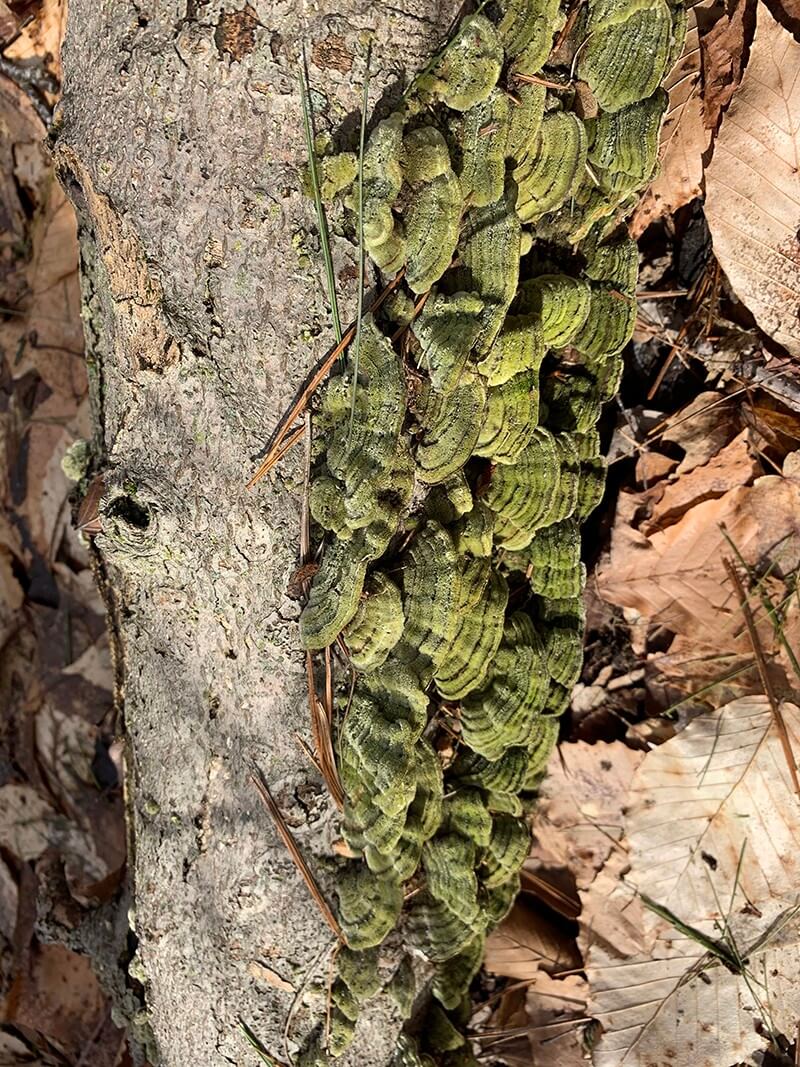Spring!

With the vernal equinox on March 19, spring arrives. Snow could bury us any day, yet birds serenade at all hours and steam rises from sugarhouses. Crocuses and snowdrops elicit smiles. On warm rainy nights amphibians venture from winter homes to breeding territory- bodies of water. Wood frogs and peepers will soon announce their courtship to all within earshot. Ah, spring.
Did you know that four species of Vermont frogs can freeze in winter? As fall arrives their livers produce sugars that serve as antifreeze, keeping cells from bursting. With the advent of warm weather, frogs thaw and migrate to water to lay and fertilize eggs.
Wood frogs are among those that can freeze—some are even found above the Arctic Circle. At Raven Ridge our monitoring team will be on the lookout for wood frogs, an indicator species for vernal pools. If wood frogs are present the body of water is likely ephemeral, meaning it disappears during drier months. Wood frogs are very vulnerable to predators like fish and turtles that need year-round water to survive. The absence of predators in a vernal pool allows wood frogs to lay eggs in peace and for their tadpoles to swim until metamorphosis.
Wood frogs emerge early from hibernation, as soon as the first week or two of March. (On a recent warm and wet evening, wood frogs were spotted crossing local roads.) This timing gives them an advantage; if vernal pools dry out early in the summer, tadpoles will have metamorphosed to frogs that do not need water to survive.
At our vernal pool, an acoustic monitor is recording three times each day, in the hope of capturing the breeding songs of wood frogs.
Much as we yearn for spring, warm weather brings challenges. Lake Champlain Maritime Museum is offering free workshops devoted to two summer menaces, cyanobacteria and aquatic invasive species. On June 2, Lake Champlain Committee Executive Director Lori Fischer will train volunteers to monitor, measure, and combat cyanobacteria, a toxin harmful to humans and pets. On June 26, Vermont Department of Environmental Conservation’s Kim Jensen leads a hands-on workshop to learn to identify, monitor, and control aquatic intruders. Register at their website.
Now for some good news: a new coalition, Burlington Wildways, is working to preserve and promote some of the Queen City’s most spectacular natural areas. Burlington Wildways, burlingtonwildways.org, does not build new trails. It consolidates existing networks, eliminating duplicate and informal social trails, creating a network of marked trails that are navigable, well-signed, and respectful of the habitats through which they pass.
Burlington Wildways Executive Director Zoe Richards says, “[Our goal] is to make fewer trails, in the right places, which are more ecologically sensitive and easier to find.”
The group has restored wetlands at Oakledge Park, is reforesting a new park along North Avenue, and has created a 5.5-mile unified trail along the Winooski River from Salmon Hole in Winooski to Ethan Allen Park in the New North End. I look forward to walking the latter on a fine spring day!
Be on the lookout, on warm sunny days, for harbingers of spring. Painted turtles spend the winter beneath the ice, with a body temperature averaging 43 degrees. In order to be active, they must raise their internal temperature to 63°–73° F. Turtles bask on rocks and logs to warm up and to capture Vitamin D that allows them to metabolize calcium to grow and solidify their shells. Only when temperatures are reliably warmer will these turtles resume activity and begin eating again.
Red-wing blackbirds are populating local marshes, males shrieking and squabbling to claim the best territory. In the understory hepatica may bloom as early as snow melts. A perennial whose leaves can photosynthesize from the first sunny days, the plant does not need energy to re-grow each spring. It can produce early flowers, a spectrum of white, pink, blue, or violet peeping above the leaf litter. Other early bloomers include snowdrops and coltsfoot, the latter usually found on roadsides as soon as the snow melts.
Keep your eyes and ears open for signs of spring!

